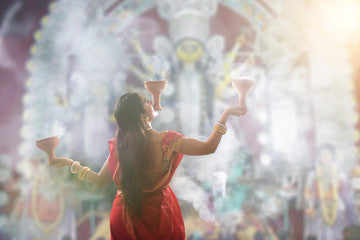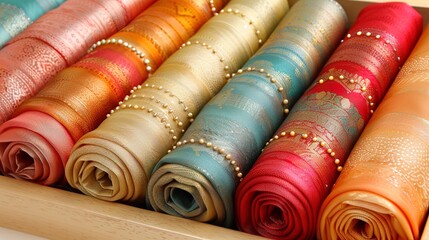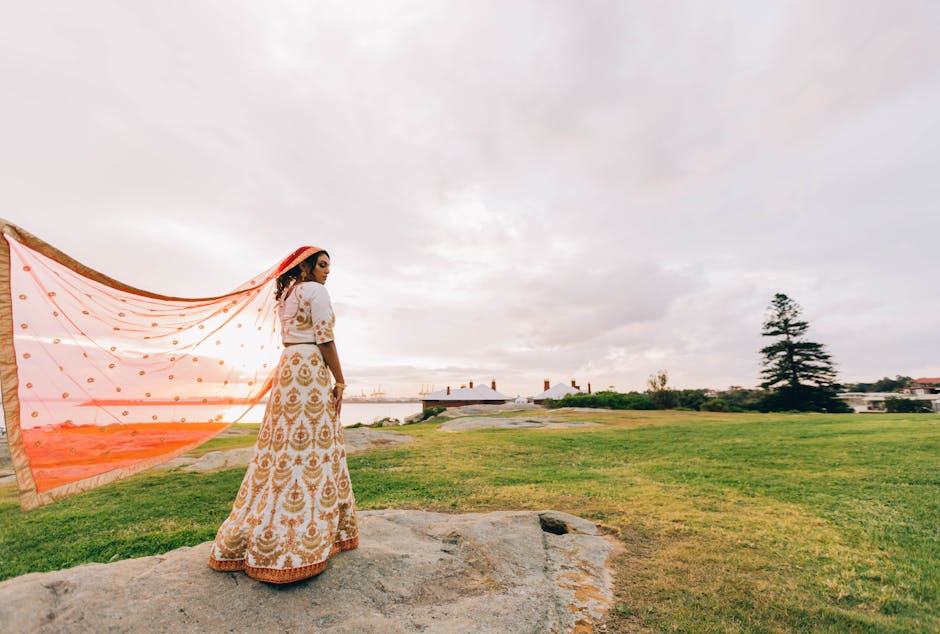Beyond the Pattern: The Secrets of Jamdani Authenticity
Discover how to identify an authentic Jamdani saree with our comprehensive guide. Learn about the unique weaving techniques, key characteristics, and where to buy genuine Jamdani sarees online. Explore options like cotton Jamdani sarees, Dhakai Jamdani sarees, and more at Balaram Saha.
Intricate, and rich in heritage, Jamdani sarees are one of the most valued handloom sarees across India. Hailing from the Bengal region, they have always epitomized grace, skillful weaving, and cultural identity. However, with growing popularity comes a host of spurious versions into the market for this traditional weave. This guide shall walk you through what to look for while buying a cotton Jamdani saree, Dhakai Jamdani saree, or soft Jamdani saree.
1. Understanding the History and Origin of Jamdani Sarees
Jamdani sarees were primarily woven in the regions of Bangladesh and West Bengal in India during the period of the Mughal rule. In Persian, the word "Jamdani" means flower vase, which best describes the floral patterns adorning most of these sarees. Traditionally, Jamdani sarees were woven from the finest Muslin. This fabric is so fine and sheer that once upon a time it was reserved only for royalty.

For generations, the technique of Jamdani weaving has been passed down through generations of skilled artisans. Even though mechanized weaving has become prominent today, the tradition of Jamdani remains a handloom one; each saree requires several months to be woven. That truly is what makes an authentic Jamdani special—the actual dedication to the craft.
2. Identifying Key Characteristics of an Authentic Jamdani Saree
a. Weaving Technique
The intricate weave is what marks a true Jamdani saree. Unlike other varieties of handloom sarees, where the design is pre-determined and then woven into the fabric, the Jamdani sarees are created using a unique "add-a-figure" method. This essentially means that as the saree is being woven, the motifs are added separately to the fabric, often without the use of any mechanical device. This results in a pattern so exceptional that it seems to just float on the surface of the fabric.
Judge the authenticity of a real Jamdani saree based on the motifs. They should not have been printed or embroidered but be a part of the weave. The wrong side of the saree will display similar work but of a marginally rougher texture, which is another such giveaway.

b. Fabric Quality
While traditional Jamdani sarees were made with the finest Muslin, more common nowadays are cotton Jamdani sarees and Jamdani cotton sarees. Any authentic Jamdani saree will be light in weight, very airy, and super soft to the skin, whether it be made of cotton or a cotton-silk blend. The fabric should drape easily and feel comfortable against the skin.
Whenever one goes to buy a Jamdani saree, it is very important to get a feel of the fabric. Balaram Saha will have a smooth finish with a slight sheen in real handloom cotton sarees. Steer clear of any stiff or unnaturally shining sarees, for these are most likely machine-made replicas.
c. Design and Motifs
The beauty of a Jamdani saree lies in its design. Floral, geometric patterns and intricate borders are what characterize the weave. An original Dhakai Jamdani saree will have elaborate designs all over the body of the saree, characterized by a different pallu and border
Observe the symmetry and precision of the motifs. Every element has to be symmetrically aligned, and there should not be any loose threads or irregularities. The other important feature to look at is the border of the saree, called "Jamdani Border Saree," which has to be wide, ornate, and woven with the same care and attention to detail as the rest of the saree.

d. Color Palette
While Jamdani sarees come in different colors, the traditional ones are never found in any other color but white, off-white, or light pastel shades. They have contrasting motifs in red, green, or gold. While time has seen more contemporary versions coming into the fray, meaning there are brighter and bolder colors added, the authentic Jamdani saree will still have a feel of elegance and subtlety in the color palette.
Keeping the occasion and personal style in mind, select the Jamdani saree accordingly. Reach for a traditional Dhakai Jamdani saree in neutral colors with red or golden motifs for an exclusive, classic look. For a bit of modernity, do wear the softer Jamdani sarees in brighter shades.
3. Spotting Fake Jamdani Sarees
With the rising demand for Jamdani sarees, the market has experienced a flood of replica products. In most cases, these replica sarees are made of substandard yarn and machine-made, hence inferior in quality and craftsman episodes compared to their original Jamdani counterparts.
a. Check the Price
One of the first clues to a fake Jamdani saree is the price. An authentic Jamdani handloom saree is a labor-intensive process, and the making of one could go up to weeks or even months. Hence, they are pocket-heavy buys compared to mass-produced replicas. So, if you get to find a Jamdani saree at a very low price, it's likely not the real deal.
b. Inspect the Weave
As stated earlier, the weave of a Jamdani saree is its most characteristic feature. To identify an imitation, look very closely at the motifs. If they seem to be printed or embroidered on and not woven, then it is not a genuine saree. Also, on the reverse of the saree, in the case of a genuine Jamdani, there will be a slightly rough texture at the places where the motifs are woven, but in the case of an imitation, it will be perfectly smooth and even.
c. Look for the Handloom Mark
Handloom Mark is a government certification for the authenticity of handloom products in India. One should check for this mark when purchasing a Jamdani saree, especially from online stores. Good retailers, like Balaram Saha, provide this certification with their handloom sarees.
4. Where to Buy Authentic Jamdani Sarees
Due to the high presence of fake Jamdani sarees in the marketplace, it is very important to buy from a trusted source. Balaram Saha is a very renowned name in handloom sarees and offers a vast collection of genuine Jamdani Sarees: cotton Jamdani Sarees, Dhakai Jamdani Sarees, soft Jamdani Sarees, and many more. With a legacy of quality and craftsmanship, Balaram Saha makes sure every saree is a real testimony to the rich heritage of handlooms associated with Bengal.
You can view and purchase authentic Jamdani sarees online at Balaram Saha's website. The printed and handwoven Jamdani collection features various styles, hues, and designs that cater to the tastes of traditional and contemporary wearers. Be it daily use or on a special day, a Jamdani cotton saree or a Dhakai Jamdani saree, Balaram Saha has it all.
5. Why Choose a Jamdani Saree?
In a sense, Jamdani sarees are not mere attires but works of art. Every single saree speaks of the depth of skill, creativity, and dedication of the weaver. So, when you drape a Jamdani saree, you get to be a part of an ageless tradition, yet at the same time, you also nourish the artisans who keep this craft alive.
a. Versatility
One of the reasons Jamdani sarees are so loved is their versatility. Such a saree can be both properly or casually presented, thus suiting it for a wide range of occasions. A soft Jamdani saree rolled in pastel color is suitable for a daytime event, and a Dhakai Jamdani saree is richly woven in fine designs with gold motifs intricately executed, making an outstanding appearance for weddings.
b. Comfort
Though on the whole, the design of a Jamdani saree is worked out in great detail, it still feels very light and hence comfortable to wear. The lightness of the fabric makes the drapes flow and allows easy movement of the limbs, thus making it a great choice for a long event or in hot weather.
c. Timeless Appeal
While trends come and go, a Jamdani saree is there forever. Its classy grace, inbuilt and intricate, is what makes it utterly timeless, beyond generations. To have a Jamdani saree means possessing a historic piece that may be handed over to successive generations as a precious heirloom.
6. Caring for Your Jamdani Saree
To ensure that your Jamdani saree retains its beauty and longevity, proper care is essential. Here are some tips to help you preserve your saree:
a. Gentle Wash
First, wash your Jamdani saree with cold water and by hand, then give it a gentle clean using soft detergent. Avoid strong, harsh chemicals or bleach since this is a very fragile fabric. Rinse well and do not wring it by twisting at any cost, as it might distort the weave.
b. Drying
Dry your Jamdani saree in a shaded area, away from direct sunlight. If your saree is dried in a vertical style, then stretching the saree is very much possible, so it is better to dry the saree on a clean, flat surface.
Keep your Jamdani saree in a dry, cool place. Creasing the saree along the same folds time and again may cause it to crease; thus, every time, try to fold it differently and store it in a cotton or muslin bag to let the fabric breathe.
7. Conclusion
Jamdani sarees represent the richest textile heritage of the Indian subcontinent and the incredible skill of Indian artisans. Learning how to recognize a real Jamdani saree makes one realize the beauty and the quantum of work that goes into creating each piece. Buying a cotton Jamdani saree for daily wear or one in luxurious Dhakai Jamdani silk for special occasions, one can look at the choice with confidence when you buy from a trusted source like Balaram Saha.
As you traverse the world of Jamdani sarees, remember that these are not ordinary sarees but masterpieces, which are representatives of tradition handed down for centuries. So, yet another avouchment in your wardrobe or your first-ever Jamdani saree, do take time out to appreciate these special sarees for which history and so much expertise have been put in.





